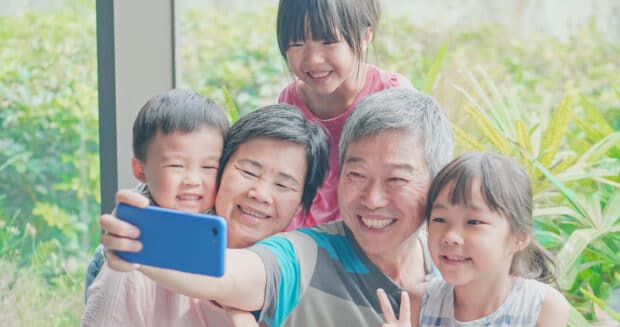An overlooked threat: Why RSV poses a hidden danger to Filipino Seniors
![]()
What is this silent virus that endangers Filipino Seniors with comorbidities?
Respiratory Syncytial Virus (RSV) is not just another cold or flu—it is potentially life- threatening for seniors with underlying health issues. Often mistaken for a minor ailment, RSV is a growing and deadly concern for over 5.5 million elderly Filipinos 1 living with high- risk conditions such as asthma, heart disease, diabetes, or COPD.
A Growing Concern for Seniors

In 2023, a surveillance of flu-like illnesses has revealed that RSV co-circulates with influenza and other respiratory viruses in the Philippines. 2
Infectious disease expert Dr. Rontgene Solante highlights the heightened vulnerability of Filipino seniors to RSV due to their weakened immune systems.3 He even noted that this infection can worsen comorbidities, being up to twice as likely to complicate asthma, up to six times more likely to affect patients with heart disease and diabetes, and up to thirteen times more likely to impact those with chronic obstructive pulmonary disease (COPD), leading to severe complications that may cause death.4
Commonly known as a pediatric disease, RSV not just affects children, but also older adults as it can easily spread within households,5 with children being likely to infect up to three other family members including vulnerable seniors.6 This rapid transmission highlights the increased risk for elderly family members, especially in close-knit Filipino households where shared spaces and close contact are common.
More than just a flu
Common signs of RSV include a congested or runny nose, sneezing, sore throat, dry cough, headache, loss of appetite, together with a mild fever.7
Because these symptoms resemble those of a common cold, RSV is often not immediately identified. Many people may dismiss the symptoms as just the flu, which can lead to the condition being undiagnosed and unmanaged until it becomes more severe.
If not immediately addressed, RSV can progress to affect the lower respiratory tract, leading to pneumonia or bronchiolitis, potentially leading to serious respiratory illnesses and even death. 8
As an infectious illness, RSV spreads easily through airborne droplets from coughs or sneezes.9 These droplets can enter the body through the eyes, nose (via inhalation), or mouth. The virus can also be contracted through direct contact, such as kissing, shaking hands, or touching surfaces like doorknobs, countertops, toys, gadgets, or anything contaminated with these droplets. Symptoms of RSV typically appear 4 to 6 days after infection and can last up to two weeks or longer.10
Protect your elderly loved ones from RSV
The limited accessibility and awareness of RSV testing in the country, along with the lack of specific treatment for adults—other than supportive care for acute infection— significantly contribute to under-diagnosis and inadequate treatment of the virus.11 This highlights the urgent need to raise awareness about RSV and encourage family members and caregivers of elderly Filipinos to seek medical attention for any respiratory symptoms.
To determine if someone has RSV, medical checkup and confirmatory testing are necessary. Although a chest X-ray alone cannot confirm or rule out RSV, doctors will evaluate any complications, review the patient’s medical history, check oxygen levels, and perform a swab test for accurate diagnosis.12 Fortunately, a recent vaccine has been developed to reduce the risk of severe RSV in older Filipino adults. Early detection and prevention remain crucial.
Families with elderly members play a key role in preventing the spread of RSV. They should quickly adopt safety and hygiene measures to safeguard their seniors.13 Simple but effective practices to prevent the spread of RSV include:
- Covering your mouth and nose with a tissue or elbow when coughing or sneezing.
- Washing hands frequently with soap and water for at least 20 seconds.
- Isolating those with symptoms to avoid spreading the virus.
- Wearing face masks, especially in crowded or enclosed spaces.
- Regularly disinfecting frequently touched surfaces like doorknobs, handrails, faucets, and gadgets.
- Avoiding touching the face, especially the eyes, nose, and mouth.
- Refraining from close contact activities like kissing or shaking hands.
- Staying home if feeling unwell to prevent exposing others to the virus.
By following these preventive measures, families can significantly reduce the risk of RSV transmission and protect their elderly loved ones from potentially severe illness.
A health service reminder from GSK:
GlaxoSmithKline Philippines Inc.
23F The Finance Centre, 26th St. cor. 9th Ave. Bonifacio Global City, Taguig Cit
©2024 GSK group of companies and its licensor
Kindly forward all adverse events to GSK Philippines via [email protected]
NP-PH-RSA-ADVR-240001 | October 2024
Sources:
1 University of the Philippines Population Institute (UPPI) and Demographic Research and Development Foundation,Inc. (DRDF). (2020 March). COVID-19 and the Older Filipino Population: How Many Are at Risk? (UPPi/DRDF Research Brief No.1). Retrieved from: https://www.uppi.upd.edu.ph/research/covid-19/rb1
2 World Health Organization. Global Influenza Surveillance and Response System (GISRS). https://www.who.int/tools/flunet
3 Cleveland Clinic. Adults 60 and up are at greater risk of complications from RSV (June 4, 2023). Retrieved from: https://health.clevelandclinic.org/rsv-in-older-adults
4 Branche AR, et al. Clin Infect Dis 2022;74:1004-1011. Incidence of Respiratory Syncytial Virus Infection Among Hospitalized Adults, 2017-2020. Retrieved from: https://doi.org/10.1093/cid/ciab595
5 Otomaru H et al. Am J Epidemiol 2021;190:2536–2543;
6 Reis J, Shaman J. PLoS Comput Biol 2016;12:e1005133;
7 Falsey, A. & Walsh, E. (n.d). National Library of Medicine. Respiratory Syncytial Virus infection in elderly adults. Retrieved from: https://pubmed.ncbi.nlm.nih.gov/16038573/
8 Centers for Disease Control and Prevention (CDC), 2023. RSV in Older Adults and Adults with Chronic Medical Conditions. Retrieved from: https://www.cdc.gov/rsv/high- risk/older-adults.html
9 Centers for Disease Control and Prevention (CDC), 2023. RSV transmission. www.cdc.gov/rsv/about/transmission.html
10 American Lung Association. RSV Symptoms and Diagnosis. Retrieved from: https://www.lung.org/lung-health-diseases/lung-disease-lookup/rsv/symptoms-diagnosis
11 Nam HH and Ison MG. BMJ 2019;366:l5021. Respiratory syncytial virus infection in adults. Retrieved from: https://doi.org/10.1136/bmj.l5021
12 US Center for Disease Control and Prevention. Diagnostic Testing for RSV. Retrieved from: https://www.cdc.gov/rsv/hcp/clinical-overview/diagnostic- testing.html?CDC_AAref_Val=https://www.cdc.gov/rsv/clinical/index.html
13 Forbes M. (2008). Strategies for preventing respiratory syncytial virus. Retrieved from: https://doi.org/10.2146/ajhp080440
GSK is not responsible for 3rd party links.
INQUIRER.net/BrandRoom JC